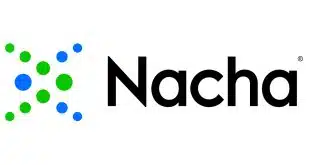Debit cards are more popular than ever, but issuers see threats to the bottom line from rising fraud and more regulation. Loss rates rose 43% on signature debit cards and 24% for PIN-debit cards in 2009, according to the Pulse EFT network’s fifth-annual survey of the debit market. Meanwhile, issuers are bracing for the Federal Reserve’s new regulations on overdrafts. Overdraft fees can increase the average active debit card account’s annual revenue by $31.
Boston-based research firm Oliver Wyman conducted the study for Pulse in February and March, asking 64 financial institutions of all sizes about their debit card portfolios’ results for 2009. The banks and credit unions, spread across the country, issue a total 78.7 million debit cards and operate more than 42,000 ATMs.
On the positive side, Pulse’s results reflect what Visa Inc. and MasterCard Inc. have been reporting over the past couple of years: While credit cards have taken a hit, debit cards are still in growth mode. PIN-based transactions grew 13% last year while signature debit transactions grew 9%. Those respective growth rates were the same as in 2008 but exceeded forecasts of 7% for each type. The average number of monthly point-of-sale debit transactions per cardholder remained unchanged at 17.3. “Despite the economic downturn last year, the debit market still remains very robust,” says Cindy Ballard, executive vice president at Houston-based Pulse, a subsidiary of Discover Financial Services.
While PIN-debit grew faster than signature debit, the signature variety stills accounts for the majority of debit purchases—12.7 monthly POS transactions per active card versus 6.4 for PIN debit. Issuers promote signature debit more heavily because the feature generates more interchange than PIN-debit. But, in explaining PIN-debit’s higher growth rates, Oliver Wyman partner Tony Hayes, who oversaw the study, notes that more merchants have PIN pads and employ so-called PIN prompting when a debit card is swiped. He adds that many consumers prefer PINs to signatures for security and to get cash back at the checkout counter at no charge.
The median ticket declined from $22 in 2008 to $18 last year, which means consumers increasingly favor debit cards for small-ticket transactions, according to Ballard. Hayes notes that 58% of debit transactions are now for less than $20, “which is remarkable because almost all of these were cash” in years past, he says.
Clouding these blue skies is rising fraud, most of which comes from data breaches. Ninety-five percent of the issuers surveyed reported receiving notices last year by payment networks or processors that some of their cards may have been compromised in a data breach. Those notices affected 31% of their cards. “It’s pretty scary stuff,” says Hayes. The survey did not ask issuers about specific breaches, such as the one merchant acquirer Heartland Payment Systems Inc. reported in January 2009 that may have compromised a record 130 million credit and debit cards.
Signature debit fraud losses increased from 5.2 basis points of charge volume in 2008 to 7.5 basis points in 2009, and PIN-debit losses rose from 0.8 basis points to 1.0. While actual fraud affected only 2% of debit cards, the much higher number of exposed cards presented issuers with a dilemma, Hayes says. Rather than reissue all potentially compromised cards, more issuers instead opted to monitor for signs of actual fraud before taking the costly step of replacing cards. “What the issuers are doing or trying to do is being much more surgical in trying to reissue cards,” he says.
Besides fraud, the other big threat to debit card profitability is the government’s crackdown on overdraft fees. Seventy-nine percent of issuers, especially big ones, cover cardholders on debit purchases that overdraw their deposit accounts. Overdrafts usually are automatic, with the cardholder paying a fee. On July 1, under changes to Regulation E, the Federal Reserve will require that new customers opt into POS overdrafts and by Aug. 15 issuers must get opt-ins from existing customers to continue overdrafts.
Consumer advocates say the new rules are necessary because of banks’ allegedly poor disclosures and unnecessarily high fees, but they are likely to crimp profitability. On average, issuers expect only 30% of their customers to opt-in for overdraft protection, according to the survey. The percentage is higher for small banks and credit unions and lower for big banks. Oliver Wyman estimates that for issuers that allow POS overdrafts, 1.4% of debit purchases currently are authorized into negative balances. The firm estimates overdraft programs can add $31 a year to an active account’s revenues, some $87 of which mostly comes from interchange, for a total of $118. The estimate is based on a $27 average overdraft fee, 17.3 transactions per month, and 39% of transactions that are authorized on a negative balance actually settling into a negative balance. That last assumption is based on commentary Bank of America Corp., the nation’s largest debit card issuer, sent to the Fed during the rulemaking process.
In all, the new rules will result in fewer approved transactions, which means less interchange income and obviously less overdraft-fee income. Issuers are taking “a wait-and-see” approach on how they’ll compensate for the lost revenue, but 45% already have some sort of plan, according to Hayes. “There are plans afoot to potentially introduce monthly fees on checking accounts or have higher minimum balances on checking accounts,” he says.





